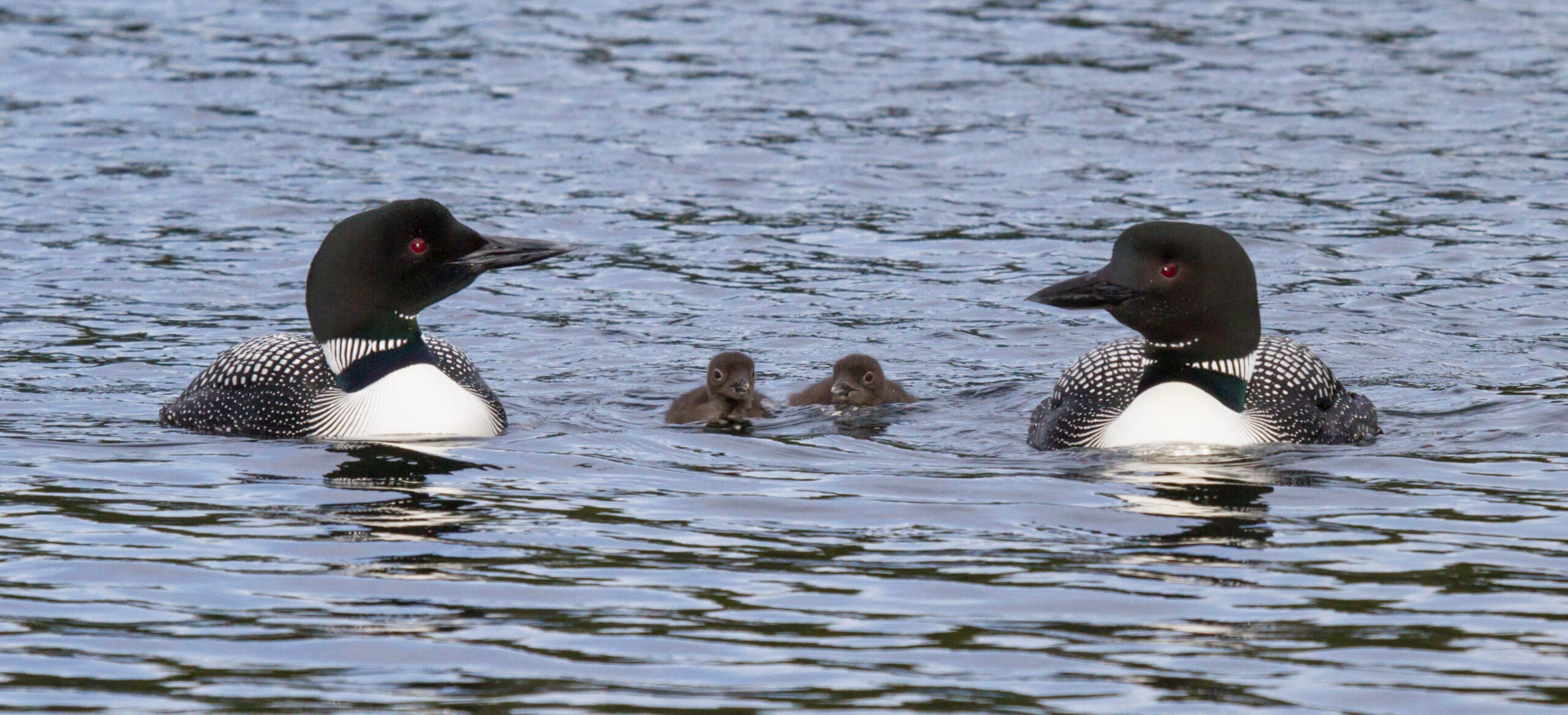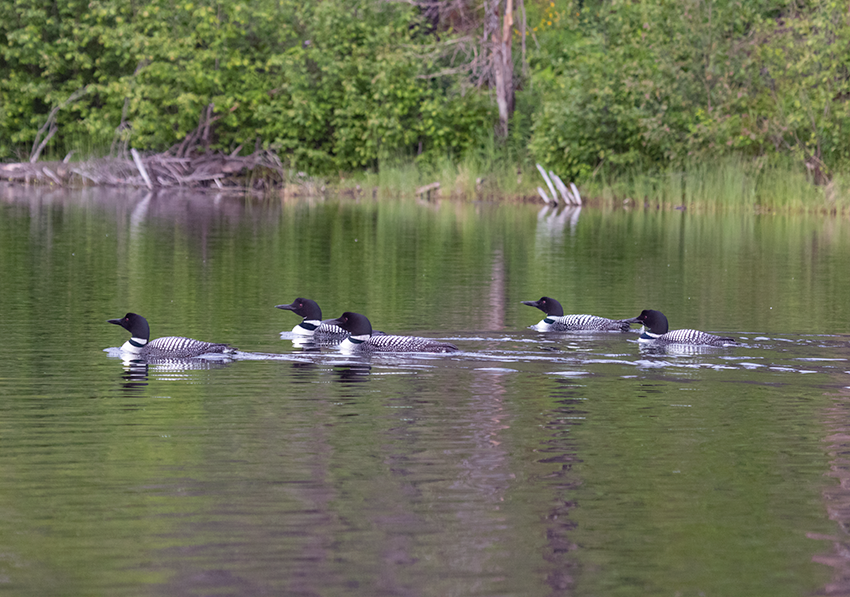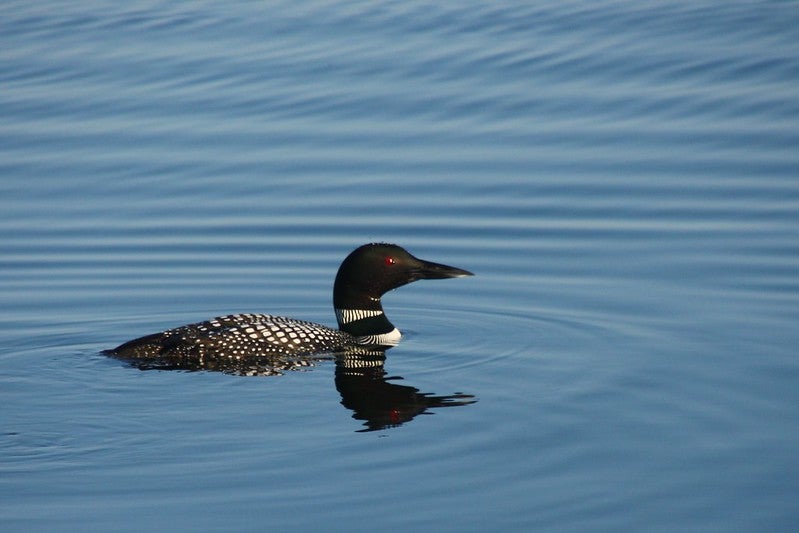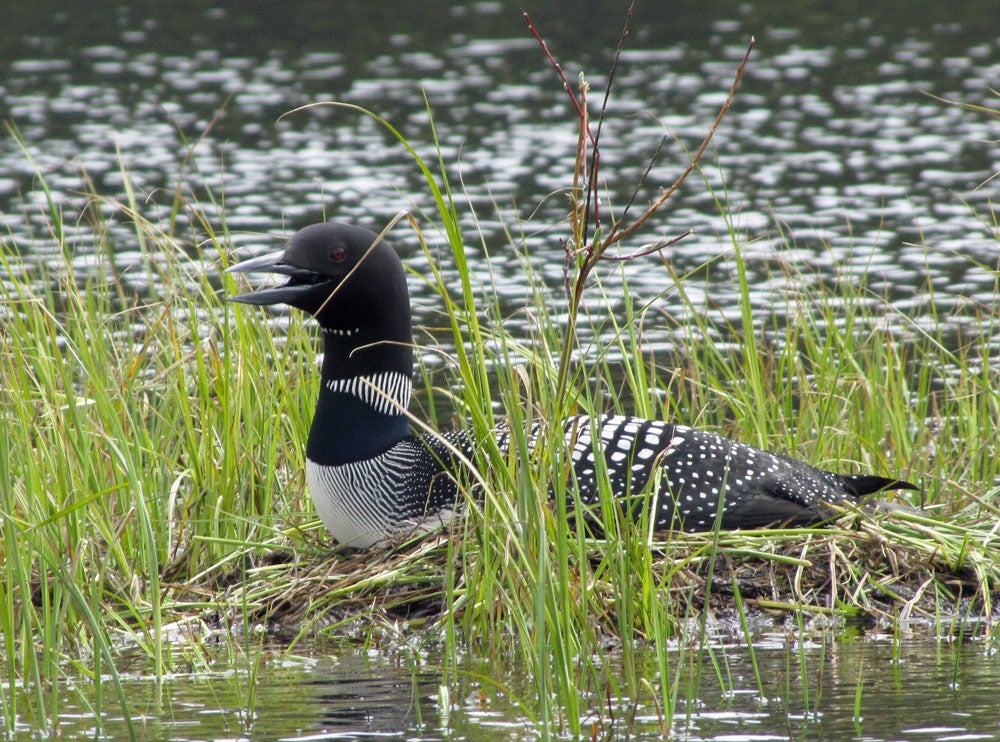Physically, penguins and common loons don’t have much in common apart from their tuxedo colors. Genetically, though, they share a common ancestor that dates back to around 50 million years ago.
James Paruk details the evolution of the common loon and his own experiences studying them for three decades in his new book, “Loon Lessons: Uncommon Encounters With the Great Northern Diver.”
Paruk, who teaches biology at St. Joseph’s College and the University of Southern Maine, grew up in Detroit and didn’t know the loon existed until he heard and saw them while visiting Lake Superior as a high school senior. That struck a chord with him. Then, while in college, he helped a friend catch and band loons as part of his master’s degree program.
News with a little more humanity
WPR’s “Wisconsin Today” newsletter keeps you connected to the state you love without feeling overwhelmed. No paywall. No agenda. No corporate filter.
“You can just imagine putting a loon on your lap, what that’s like, what a powerful experience that was,” he said. “And that really got me thinking about studying loons for a career.”
His book dives into more than 25 years of research on loons, their biology and their behavior.

Loon Evolution
It’s through DNA extraction and comparison that scientists are able to identify penguins and loons as genetic neighbors. But that wasn’t expected. Paruk said scientists thought loons would be much closer genetically to ducks, grebes or mergansers.
“The DNA’s telling us otherwise,” he said. “And it’s interesting, too, because loons are mostly (in) the Northern Hemisphere and penguins are (in) the Southern Hemisphere.”
Like their penguin cousins, loons are master divers and efficient at catching fish. Modifications to their physiology enabled loons, which live in both freshwater and marine environments, to survive.
“The feet are positioned far posteriorly, or towards the back, enlarged feet, added rotation in terms of the joint, enlarged webs, all to help propel the loon to make it streamlined through the water for the ability to chase down and catch fish,” he said.
Similar bone structures of the five species of loons that exist today appeared in the fossil record about 3 million years ago, Paruk said.
“The modern ones we see today seem to be fairly current within the last 2.5 (million), 3 million years,” he said.
But those adaptations that make the loon so successful in the water aren’t without compromise. Because the loon is specialized for swimming underwater, it’s less adept out of the water.
For example, Paruk explained some birds have a large keel, which is an enlarged breast of the bird wings are attached to. Loons don’t have large keels because it would slow them down underwater. But without room for large muscle attachments from the chest, there’s less propulsion to get into the air.
“So, that’s why loons have such long runways,” Paruk said.

Other Interesting Facts
Colors: The belly of a loon is white, and Paruk said biologists think that’s an adaptation to increase chance of survival in the ocean.
Loons in Wisconsin will travel to the Gulf of Mexico or the Atlantic Ocean side of the Floridian peninsula where there are threats of large predators, namely sharks.
But with a white belly, the loons are better camouflaged with the light-colored sky.
Calls: Loons have a few calls that can be heard from 600 feet away or more.
A loon’s wail, which listeners will hear as a sort of two-note change in frequency, is a contact call from a bird that’s concerned, Paruk said. Maybe there’s a boat nearby or something moving into its territory.
The wail is the loon’s attempt to contact their partner to say something may be going on around the nest or in the area.
“Usually what happens is the other pair member comes closer to the originator of that call and may respond as well,” he said.
A tremolo, a burst of notes, is used by a loon to sound the alarm. This means the loon feels threatened and their anxiety is ramping up. Again, this is used to signal to the other pair member to get close.
If you hear a tremolo, you could be the cause of the stress. In that case, slowly move away and give the loon their space. If you move far enough away, the calls will probably stop.
Yodels are sounded off by male loons who want to announce that they’ve established a territory and are willing to defend it.
Mating & parenting: Contrary to popular belief, loons do not mate for life. Biologists know this because they’ve been able to follow banded loons and keep track of which pairs stay together and for how long.
Paruk said loons are serially monogamous for anywhere from five to 15 years but will eventually seek out a new mate.
In his anecdotal research, Paruk said he’s noticed that parental responsibility is pretty equally shared between the male and female.
“You see a coordination between pair members,” he said. “And pairs that are more refined and more in tune to each other probably are more successful in raising more chicks.”
Loons will most often lay two eggs. Biologists theorize that two is better than one, in case one is infertile, and two is better than three because that’d put too much pressure on the family to provide food.
About two weeks after the chicks hatch, they’re able to walk. This is so they can move across land to get to another lake where there might be more fish.
In Wisconsin, where loons mature a bit quicker than elsewhere, loon chicks may take between eight and 10 weeks to take flight.
Aggression: There are stories of loons attacking canoes and kayaks, but that’s probably because they’re trying to protect their nearby nests, Paruk said.
Additionally, an avid loon watcher might notice loons are extremely aggressive toward other loons during May and June, and then much more social and interactive come July, August and September.
Paruk hypothesized that’s probably because they’re partnering up, breeding and laying eggs in the earlier part of the year and when hormones change in the later part of the year, they become much more social.
“These loons interact almost as if getting to know other peer members…reconnaissance for potential new territories, evaluating the partnership to see if it’s stable. Was the pair successful? Do they have young? So we see these kinds of social gatherings that…seem to be highly ritualized and stereotyped in their behaviors,” he said.
Wisconsin Public Radio, © Copyright 2026, Board of Regents of the University of Wisconsin System and Wisconsin Educational Communications Board.





